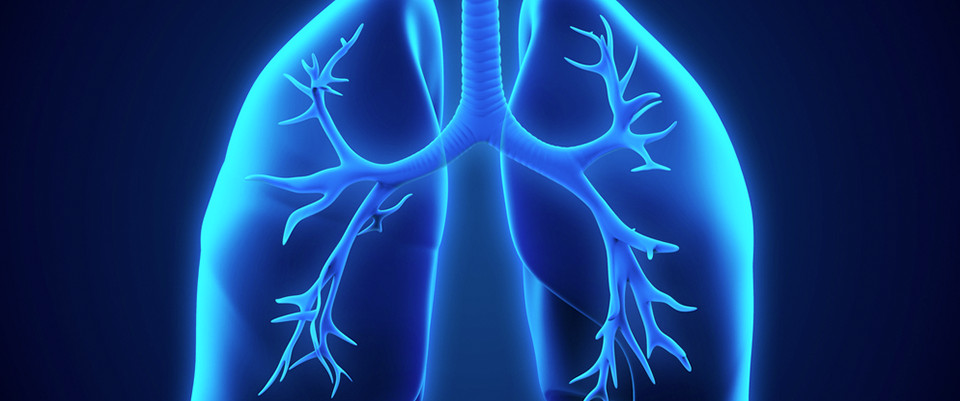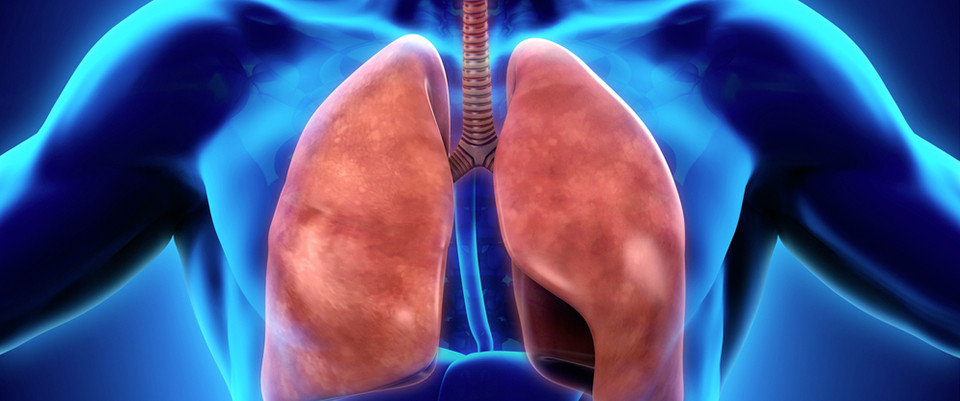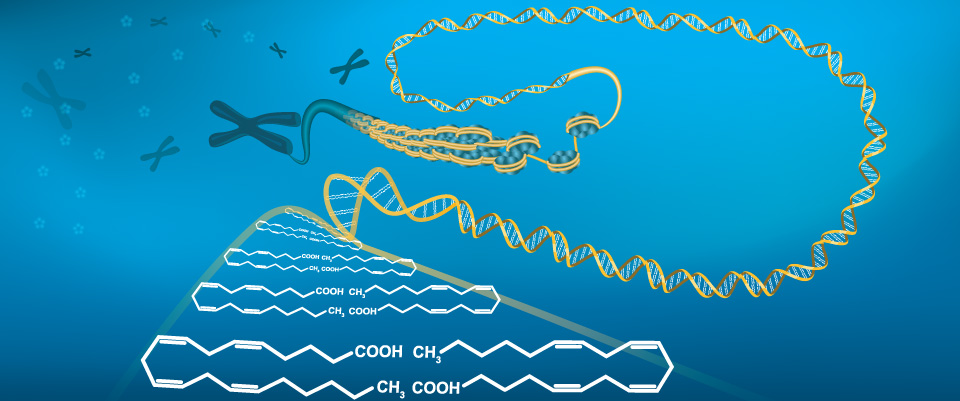PubMed
metabolomics; +36 new citations
36 new pubmed citations were retrieved for your search.
Click on the search hyperlink below to display the complete search results:
metabolomics
These pubmed results were generated on 2020/12/22PubMed comprises more than millions of citations for biomedical literature from MEDLINE, life science journals, and online books.
Citations may include links to full-text content from PubMed Central and publisher web sites.
Supervised machine learning enables non-invasive lesion characterization in primary prostate cancer with [68Ga]Ga-PSMA-11 PET/MRI.
Related Articles
Supervised machine learning enables non-invasive lesion characterization in primary prostate cancer with [68Ga]Ga-PSMA-11 PET/MRI.
Eur J Nucl Med Mol Imaging. 2020 Dec 19;:
Authors: Papp L, Spielvogel CP, Grubmüller B, Grahovac M, Krajnc D, Ecsedi B, Sareshgi RAM, Mohamad D, Hamboeck M, Rausch I, Mitterhauser M, Wadsak W, Haug AR, Kenner L, Mazal P, Susani M, Hartenbach S, Baltzer P, Helbich TH, Kramer G, Shariat SF, Beyer T, Hartenbach M, Hacker M
Abstract
PURPOSE: Risk classification of primary prostate cancer in clinical routine is mainly based on prostate-specific antigen (PSA) levels, Gleason scores from biopsy samples, and tumor-nodes-metastasis (TNM) staging. This study aimed to investigate the diagnostic performance of positron emission tomography/magnetic resonance imaging (PET/MRI) in vivo models for predicting low-vs-high lesion risk (LH) as well as biochemical recurrence (BCR) and overall patient risk (OPR) with machine learning.
METHODS: Fifty-two patients who underwent multi-parametric dual-tracer [18F]FMC and [68Ga]Ga-PSMA-11 PET/MRI as well as radical prostatectomy between 2014 and 2015 were included as part of a single-center pilot to a randomized prospective trial (NCT02659527). Radiomics in combination with ensemble machine learning was applied including the [68Ga]Ga-PSMA-11 PET, the apparent diffusion coefficient, and the transverse relaxation time-weighted MRI scans of each patient to establish a low-vs-high risk lesion prediction model (MLH). Furthermore, MBCR and MOPR predictive model schemes were built by combining MLH, PSA, and clinical stage values of patients. Performance evaluation of the established models was performed with 1000-fold Monte Carlo (MC) cross-validation. Results were additionally compared to conventional [68Ga]Ga-PSMA-11 standardized uptake value (SUV) analyses.
RESULTS: The area under the receiver operator characteristic curve (AUC) of the MLH model (0.86) was higher than the AUC of the [68Ga]Ga-PSMA-11 SUVmax analysis (0.80). MC cross-validation revealed 89% and 91% accuracies with 0.90 and 0.94 AUCs for the MBCR and MOPR models respectively, while standard routine analysis based on PSA, biopsy Gleason score, and TNM staging resulted in 69% and 70% accuracies to predict BCR and OPR respectively.
CONCLUSION: Our results demonstrate the potential to enhance risk classification in primary prostate cancer patients built on PET/MRI radiomics and machine learning without biopsy sampling.
PMID: 33341915 [PubMed - as supplied by publisher]
UPLC-MS based plasma metabolomics and lipidomics reveal alterations associated with IgG4-related disease.
Related Articles
UPLC-MS based plasma metabolomics and lipidomics reveal alterations associated with IgG4-related disease.
Rheumatology (Oxford). 2020 Dec 20;:
Authors: Gong Y, Zhang P, Liu Z, Li J, Lu H, Wang Y, Qiu B, Wang M, Fei Y, Chen H, Peng L, Li J, Zhou J, Shi Q, Zhang X, Shen M, Zeng X, Zhang F, Zhang W
Abstract
OBJECTIVE: The pathogenesis of IgG4-related disease (IgG4-RD) remains unclear. Metabolomic profiling of IgG4-RD patients offers an opportunity to identify novel pathophysiological targets and biomarkers. This study aims to identify potential plasma biomarkers associated with IgG4-RD.
METHODS: Thirty newly diagnosed IgG4-RD patients, age-matched healthy controls and post-treated IgG4-RD patients were enrolled. Patients' clinical data, laboratory parameters and plasma were collected. Plasma was measured for ultraperformance liquid chromatography-tandem mass spectrometry based metabolomics and lipidomics profiling. Multivariate and univariate statistical analyses were conducted to identify potential biomarkers. The receiver operating characteristic and the correlations between biomarkers and clinical parameters were investigated.
RESULTS: The plasma metabolites are altered among healthy controls, newly diagnosed IgG4-RD and post-treated IgG4-RD groups. Of the identified features, eight metabolites were significantly perturbed in the IgG4-RD group, including glyceric acid 1,3-biphosphate (1,3-BPG), uridine triphosphate (UTP), uridine diphosphate glucose (UDP-Glc) or uridine diphosphate galactose (UDP-Gal), lysophospholipids, linoleic acid derivatives and ceramides. Receiver operating characteristic analysis indicated that UTP, UDP-Glc/UDP-Gal and LysoPC (18:1) had high sensitivity and specificity in diagnosis of IgG4-RD. A Pearson correlation analysis showed that 1,3-BPG and UTP were strongly correlated with clinical parameters.
CONCLUSION: IgG4-RD patients have a unique plasma metabolomic profile compared with healthy controls. Our study suggested that metabolomic profiling may provide important insights into pathophysiology and testable biomarkers for diagnosis of IgG4-RD.
PMID: 33341881 [PubMed - as supplied by publisher]
Lindera aggregata intervents adenine-induced chronic kidney disease by mediating metabolism and TGF-β/Smad signaling pathway.
Related Articles
Lindera aggregata intervents adenine-induced chronic kidney disease by mediating metabolism and TGF-β/Smad signaling pathway.
Biomed Pharmacother. 2020 Dec 16;134:111098
Authors: Cai H, Wang J, Luo Y, Wang F, He G, Zhou G, Peng X
Abstract
INTRODUCTION: Lindera aggregata is a main Chinese herb of ancient prescriptions Suoquan pill applied for treating the chronic kidney disease (CKD). A large number of application histories of Lindera aggregata in the treatment of CKD have been recorded in Chinese traditional medical literature. The previous reports revealed that Lindera aggregata can treat CKD.
METHODS: Rats were randomly divided into control, model, Huangkui,Lindera aggregata ethanol extract (LEE) and Lindera aggregata water extract (LWE) groups. hematoxylin-eosin (HE) staining was used to detect the pathology of kidney. The levels of serum creatinine (Scr), serum Neutrophil gelatinase-associated lipocalin (NGAL), blood urea nitrogen (BUN), urine protein (UP), kidney index(KI) were evaluated. The UPLC - QTOF/MS were applied to probe the metabolic profile. Furthermore, Indoxyl sulfate-induced human renal tubular epithelial (HK-2) cell model was built to determine the expression levels of pathogenesis-related proteins.
RESULTS: The results demonstrated that LEE and LWE significantly inhibited the rebound in Scr, BUN, NGAL, UP and KI in models, except for the effect of LWE at low dose (LWE-L) and LEE at low dose (LEE-L) on KI and the effect of LWE-H at high dose (LWE-H) and LEE-L on BUN and NGAL. Moreover,Lindera aggregata extracts alleviated renal tubular dilatation, interstitial fibrosis and interstitial inflammation. By analysis, twenty-eight metabolites were related to CKD. After intervention of Lindera aggregata extracts, some metabolites approach to a normal-like level, such as Indoxyl sulfate. These metabolites are mainly involved in tryptophan, fatty acid, glycerophospholipid, tyrosine and arachidonic acid metabolic pathways. Furthermore, Lindera aggregata extracts mediate the expression of smad2, smad3, smad7 and TGF-β in Indoxyl sulfate-induced HK-2 cell.
CONCLUSIONS: Lindera aggregata extracts can mitigate adenine-induced CKD by modulating the metabolic profile and TGF-β/Smad signaling pathway, providing important supports for developing protective agent of Lindera aggregata for CKD.
PMID: 33341058 [PubMed - as supplied by publisher]
Recent development of nanoparticle-assisted metabolites analysis with mass spectrometry.
Related Articles
Recent development of nanoparticle-assisted metabolites analysis with mass spectrometry.
J Chromatogr A. 2020 Dec 05;1636:461785
Authors: Li H, Li T, Shi X, Xu G
Abstract
Metabolomics systematically studies the changes of metabolites in biological systems in the temporal or spatial dimensions. It is a challenging task for comprehensive analysis of metabolomics because of diverse physicochemical properties and wide concentration distribution of metabolites. Used as enrichment sorbents, chemoselective probes, chromatographic stationary phases, MS ionization matrix, nanomaterials play excellent roles in improving the selectivity, separation performance, detection sensitivity and identification efficiency of metabolites when mass spectrometry is employed as the detection technique. This review summarized the recent development of nanoparticle-assisted metabolites analysis in terms of assisting the pretreatment of biological samples, improving the separation performance and enhancing the MALDI-MS detection.
PMID: 33340742 [PubMed - as supplied by publisher]
Dominant optic atrophy: Culprit mitochondria in the optic nerve.
Related Articles
Dominant optic atrophy: Culprit mitochondria in the optic nerve.
Prog Retin Eye Res. 2020 Dec 16;:100935
Authors: Lenaers G, Neutzner A, Le Dantec Y, Jüschke C, Xiao T, Decembrini S, Swirski S, Kieninger S, Agca C, Kim US, Reynier P, Yu-Wai-Man P, Neidhardt J, Wissinger B
Abstract
Dominant optic atrophy (DOA) is an inherited mitochondrial disease leading to specific degeneration of retinal ganglion cells (RGCs), thus compromising transmission of visual information from the retina to the brain. Usually, DOA starts during childhood and evolves to poor vision or legal blindness, affecting the central vision, whilst sparing the peripheral visual field. In 20% of cases, DOA presents as syndromic disorder, with secondary symptoms affecting neuronal and muscular functions. Twenty years ago, we demonstrated that heterozygous mutations in OPA1 are the most frequent molecular cause of DOA. Since then, variants in additional genes, which functions in many instances converge to OPA1 functions, were identified by next generation sequencing. OPA1 encodes a dynamin-related GTPase imported into mitochondria and located to inner membrane and intermembrane space. The many OPA1 isoforms, resulting from alternative splicing of three exons, form complex homopolymers that structure mitochondrial cristae, and contribute to fusion of the outer membrane, thus shaping the whole mitochondrial network. Moreover, OPA1 is required for oxidative phosphorylation, maintenance of mitochondrial genome, calcium homeostasis and regulation of apoptosis, thus making OPA1 the Swiss army-knife of mitochondria. Understanding DOA pathophysiology requires the understanding of RGC peculiarities with respect to OPA1 functions. Besides the tremendous energy requirements of RGCs to relay visual information from the eye to the brain, these neurons present unique features related to their differential environments in the retina, and to the anatomical transition occurring at the lamina cribrosa, which parallel major adaptations of mitochondrial physiology and shape, in the pre- and post-laminar segments of the optic nerve. Three DOA mouse models, with different Opa1 mutations, have been generated to study intrinsic mechanisms responsible for RGC degeneration, and these have further revealed secondary symptoms related to mitochondrial dysfunctions, mirroring the more severe syndromic phenotypes seen in a subgroup of patients. Metabolomics analyses of cells, mouse organs and patient plasma mutated for OPA1 revealed new unexpected pathophysiological mechanisms related to mitochondrial dysfunction, and biomarkers correlated quantitatively to the severity of the disease. Here, we review and synthesize these data, and propose different approaches for embracing possible therapies to fulfil the unmet clinical needs of this disease, and provide hope to affected DOA patients.
PMID: 33340656 [PubMed - as supplied by publisher]
Hallmarks of Health.
Related Articles
Hallmarks of Health.
Cell. 2020 Dec 15;:
Authors: López-Otín C, Kroemer G
Abstract
Health is usually defined as the absence of pathology. Here, we endeavor to define health as a compendium of organizational and dynamic features that maintain physiology. The biological causes or hallmarks of health include features of spatial compartmentalization (integrity of barriers and containment of local perturbations), maintenance of homeostasis over time (recycling and turnover, integration of circuitries, and rhythmic oscillations), and an array of adequate responses to stress (homeostatic resilience, hormetic regulation, and repair and regeneration). Disruption of any of these interlocked features is broadly pathogenic, causing an acute or progressive derailment of the system coupled to the loss of numerous stigmata of health.
PMID: 33340459 [PubMed - as supplied by publisher]
Overexpression and inhibition of 3-hydroxy-3-methylglutaryl-CoA synthase affect central metabolic pathways in tobacco.
Related Articles
Overexpression and inhibition of 3-hydroxy-3-methylglutaryl-CoA synthase affect central metabolic pathways in tobacco.
Plant Cell Physiol. 2020 Dec 19;:
Authors: Liao P, Lung SC, Chan WL, Hu M, Kong GK, Bach TJ, Hao Q, Lo C, Chye ML
Abstract
Little has been established on the relationship between the mevalonate (MVA) pathway and other metabolic pathways except for the sterol and glucosinolate biosynthesis pathways. In the MVA pathway, 3-hydroxy-3-methylglutaryl-CoA synthase (HMGS) catalyses the condensation of acetoacetyl-CoA and acetyl-CoA to form HMG-CoA. Our previous studies had shown that while the recombinant Brassica juncea HMGS1 (BjHMGS1) mutant S359A displayed 10-fold higher enzyme activity than wild-type (wt) BjHMGS1, transgenic tobacco overexpressing S359A (OE-S359A) exhibited higher sterol content, growth rate and seed yield than OE-wtBjHMGS1. Herein, untargeted proteomics and targeted metabolomics were employed to understand the phenotypic effects of HMGS overexpression in tobacco by examining which other metabolic pathways were affected. SWATH-MS quantitative proteomics analysis on OE-wtBjHMGS1 and OE-S359A identified the misregulation of proteins in primary metabolism and cell wall modification, while some proteins related to photosynthesis and the tricarboxylic acid cycle were upregulated in OE-S359A. Metabolomic analysis indicated corresponding changes in carbohydrate, amino acid and fatty acid contents in HMGS-OEs, and F-244, a specific inhibitor of HMGS, was applied successfully on tobacco to confirm these observations. Finally, the crystal structure of acetyl-CoA-liganded S359A revealed that improved activity of S359A likely resulted from a loss in hydrogen bonding between Ser359 and acyl-CoA which is evident in wtBjHMGS1. This work suggests that regulation of plant growth by HMGS can influence the central metabolic pathways. Furthermore, this study demonstrates that the application of the HMGS-specific inhibitor (F-244) in tobacco represents an effective approach for studying the HMGS/MVA pathway.
PMID: 33340324 [PubMed - as supplied by publisher]
Systems biology in cardiovascular disease: a multiomics approach.
Related Articles
Systems biology in cardiovascular disease: a multiomics approach.
Nat Rev Cardiol. 2020 Dec 18;:
Authors: Joshi A, Rienks M, Theofilatos K, Mayr M
Abstract
Omics techniques generate large, multidimensional data that are amenable to analysis by new informatics approaches alongside conventional statistical methods. Systems theories, including network analysis and machine learning, are well placed for analysing these data but must be applied with an understanding of the relevant biological and computational theories. Through applying these techniques to omics data, systems biology addresses the problems posed by the complex organization of biological processes. In this Review, we describe the techniques and sources of omics data, outline network theory, and highlight exemplars of novel approaches that combine gene regulatory and co-expression networks, proteomics, metabolomics, lipidomics and phenomics with informatics techniques to provide new insights into cardiovascular disease. The use of systems approaches will become necessary to integrate data from more than one omic technique. Although understanding the interactions between different omics data requires increasingly complex concepts and methods, we argue that hypothesis-driven investigations and independent validation must still accompany these novel systems biology approaches to realize their full potential.
PMID: 33340009 [PubMed - as supplied by publisher]
Metabolic Profile of Scytalidium parasiticum-Ganoderma boninense Co-Cultures Revealed the Alkaloids, Flavonoids and Fatty Acids that Contribute to Anti-Ganoderma Activity.
Related Articles
Metabolic Profile of Scytalidium parasiticum-Ganoderma boninense Co-Cultures Revealed the Alkaloids, Flavonoids and Fatty Acids that Contribute to Anti-Ganoderma Activity.
Molecules. 2020 Dec 16;25(24):
Authors: Ahmad R, Lim CK, Marzuki NF, Goh YK, Azizan KA, Goh YK, Goh KJ, Ramzi AB, Baharum SN
Abstract
In solving the issue of basal stem rot diseases caused by Ganoderma, an investigation of Scytalidium parasiticum as a biological control agent that suppresses Ganoderma infection has gained our interest, as it is more environmentally friendly. Recently, the fungal co-cultivation has emerged as a promising method to discover novel antimicrobial metabolites. In this study, an established technique of co-culturing Scytalidium parasiticum and Ganoderma boninense was applied to produce and induce metabolites that have antifungal activity against G. boninense. The crude extract from the co-culture media was applied to a High Performance Liquid Chromatography (HPLC) preparative column to isolate the bioactive compounds, which were tested against G. boninense. The fractions that showed inhibition against G. boninense were sent for a Liquid Chromatography-Time of Flight-Mass Spectrometry (LC-TOF-MS) analysis to further identify the compounds that were responsible for the microbicidal activity. Interestingly, we found that eudistomin I, naringenin 7-O-beta-D-glucoside and penipanoid A, which were present in different abundances in all the active fractions, except in the control, could be the antimicrobial metabolites. In addition, the abundance of fatty acids, such as oleic acid and stearamide in the active fraction, also enhanced the antimicrobial activity. This comprehensive metabolomics study could be used as the basis for isolating biocontrol compounds to be applied in oil palm fields to combat a Ganoderma infection.
PMID: 33339375 [PubMed - as supplied by publisher]
Caffeine-Containing Energy Shots Cause Acute Impaired Glucoregulation in Adolescents.
Related Articles
Caffeine-Containing Energy Shots Cause Acute Impaired Glucoregulation in Adolescents.
Nutrients. 2020 Dec 16;12(12):
Authors: Shearer J, Reimer RA, Hittel DS, Gault MA, Vogel HJ, Klein MS
Abstract
Caffeine-containing, nutritionally fortified energy shots are consumed at high rates by adolescents, yet little is known about their metabolic impact. The purpose of this study was to examine the consequences of small format, caffeinated energy shots on glucose metabolism and gastrointestinal hormone secretion in adolescents. Twenty participants aged 13-19 years participated in a double-blind, randomized cross-over study consisting of two trials separated by 1-4 weeks. Participants consumed a volume-matched caffeinated energy shot (CAF, 5 mg/kg) or a decaffeinated energy shot (DECAF) followed by a 2 h oral glucose tolerance test. Blood samples were collected and area under the curve (AUC) calculated for glucose, insulin and gut and metabolic hormones. Consumption of CAF resulted in a 25% increase in glucose and a 26% increase in insulin area under the curve (AUC, p = 0.037; p < 0.0001) compared to DECAF. No impact on gut hormones was observed. To further characterize responses, individuals were classified as either slow or fast caffeine metabolizers based on an allele score. Glucose intolerance was greater in genetically fast vs. slow caffeine metabolizers and differences between groups were supported by distinct serum metabolomics separation. Consumption of caffeine-containing energy shots results in acute impaired glucoregulation in healthy adolescents as characterized by hyperinsulinemia following an oral glucose challenge.
PMID: 33339359 [PubMed - as supplied by publisher]
The Metabolomics of Childhood Atopic Diseases: A Comprehensive Pathway-Specific Review.
Related Articles
The Metabolomics of Childhood Atopic Diseases: A Comprehensive Pathway-Specific Review.
Metabolites. 2020 Dec 16;10(12):
Authors: Schjødt MS, Gürdeniz G, Chawes B
Abstract
Asthma, allergic rhinitis, food allergy, and atopic dermatitis are common childhood diseases with several different underlying mechanisms, i.e., endotypes of disease. Metabolomics has the potential to identify disease endotypes, which could beneficially promote personalized prevention and treatment. Here, we summarize the findings from metabolomics studies of children with atopic diseases focusing on tyrosine and tryptophan metabolism, lipids (particularly, sphingolipids), polyunsaturated fatty acids, microbially derived metabolites (particularly, short-chain fatty acids), and bile acids. We included 25 studies: 23 examined asthma or wheezing, five examined allergy endpoints, and two focused on atopic dermatitis. Of the 25 studies, 20 reported findings in the pathways of interest with findings for asthma in all pathways and for allergy and atopic dermatitis in most pathways except tyrosine metabolism and short-chain fatty acids, respectively. Particularly, tyrosine, 3-hydroxyphenylacetic acid, N-acetyltyrosine, tryptophan, indolelactic acid, 5-hydroxyindoleacetic acid, p-Cresol sulfate, taurocholic acid, taurochenodeoxycholic acid, glycohyocholic acid, glycocholic acid, and docosapentaenoate n-6 were identified in at least two studies. This pathway-specific review provides a comprehensive overview of the existing evidence from metabolomics studies of childhood atopic diseases. The altered metabolic pathways uncover some of the underlying biochemical mechanisms leading to these common childhood disorders, which may become of potential value in clinical practice.
PMID: 33339279 [PubMed - as supplied by publisher]
Metabolic and Nutritional Issues Associated with Spinal Muscular Atrophy.
Related Articles
Metabolic and Nutritional Issues Associated with Spinal Muscular Atrophy.
Nutrients. 2020 Dec 16;12(12):
Authors: Li YJ, Chen TH, Wu YZ, Tseng YH
Abstract
Spinal muscular atrophy (SMA), the main genetic cause of infant death, is a neurodegenerative disease characterized by the selective loss of motor neurons in the anterior horn of the spinal cord, accompanied by muscle wasting. Pathomechanically, SMA is caused by low levels of the survival motor neuron protein (SMN) resulting from the loss of the SMN1 gene. However, emerging research extends the pathogenic effect of SMN deficiency beyond motor neurons. A variety of metabolic abnormalities, especially altered fatty acid metabolism and impaired glucose tolerance, has been described in isolated cases of SMA; therefore, the impact of SMN deficiency in metabolic abnormalities has been speculated. Although the life expectancy of these patients has increased due to novel disease-modifying therapies and standardization of care, understanding of the involvement of metabolism and nutrition in SMA is still limited. Optimal nutrition support and metabolic monitoring are essential for patients with SMA, and a comprehensive nutritional assessment can guide personalized nutritional therapy for this vulnerable population. It has recently been suggested that metabolomics studies before and after the onset of SMA in patients can provide valuable information about the direct or indirect effects of SMN deficiency on metabolic abnormalities. Furthermore, identifying and quantifying the specific metabolites in SMA patients may serve as an authentic biomarker or therapeutic target for SMA. Here, we review the main epidemiological and mechanistic findings that link metabolic changes to SMA and further discuss the principles of metabolomics as a novel approach to seek biomarkers and therapeutic insights in SMA.
PMID: 33339220 [PubMed - as supplied by publisher]
metabolomics; +27 new citations
27 new pubmed citations were retrieved for your search.
Click on the search hyperlink below to display the complete search results:
metabolomics
These pubmed results were generated on 2020/12/19PubMed comprises more than millions of citations for biomedical literature from MEDLINE, life science journals, and online books.
Citations may include links to full-text content from PubMed Central and publisher web sites.
metabolomics; +32 new citations
32 new pubmed citations were retrieved for your search.
Click on the search hyperlink below to display the complete search results:
metabolomics
These pubmed results were generated on 2020/12/18PubMed comprises more than millions of citations for biomedical literature from MEDLINE, life science journals, and online books.
Citations may include links to full-text content from PubMed Central and publisher web sites.
metabolomics; +29 new citations
29 new pubmed citations were retrieved for your search.
Click on the search hyperlink below to display the complete search results:
metabolomics
These pubmed results were generated on 2020/12/17PubMed comprises more than millions of citations for biomedical literature from MEDLINE, life science journals, and online books.
Citations may include links to full-text content from PubMed Central and publisher web sites.
metabolomics; +23 new citations
23 new pubmed citations were retrieved for your search.
Click on the search hyperlink below to display the complete search results:
metabolomics
These pubmed results were generated on 2020/12/16PubMed comprises more than millions of citations for biomedical literature from MEDLINE, life science journals, and online books.
Citations may include links to full-text content from PubMed Central and publisher web sites.
metabolomics; +92 new citations
92 new pubmed citations were retrieved for your search.
Click on the search hyperlink below to display the complete search results:
metabolomics
These pubmed results were generated on 2020/12/15PubMed comprises more than millions of citations for biomedical literature from MEDLINE, life science journals, and online books.
Citations may include links to full-text content from PubMed Central and publisher web sites.
metabolomics; +92 new citations
92 new pubmed citations were retrieved for your search.
Click on the search hyperlink below to display the complete search results:
metabolomics
These pubmed results were generated on 2020/12/15PubMed comprises more than millions of citations for biomedical literature from MEDLINE, life science journals, and online books.
Citations may include links to full-text content from PubMed Central and publisher web sites.
metabolomics; +24 new citations
24 new pubmed citations were retrieved for your search.
Click on the search hyperlink below to display the complete search results:
metabolomics
These pubmed results were generated on 2020/12/12PubMed comprises more than millions of citations for biomedical literature from MEDLINE, life science journals, and online books.
Citations may include links to full-text content from PubMed Central and publisher web sites.











